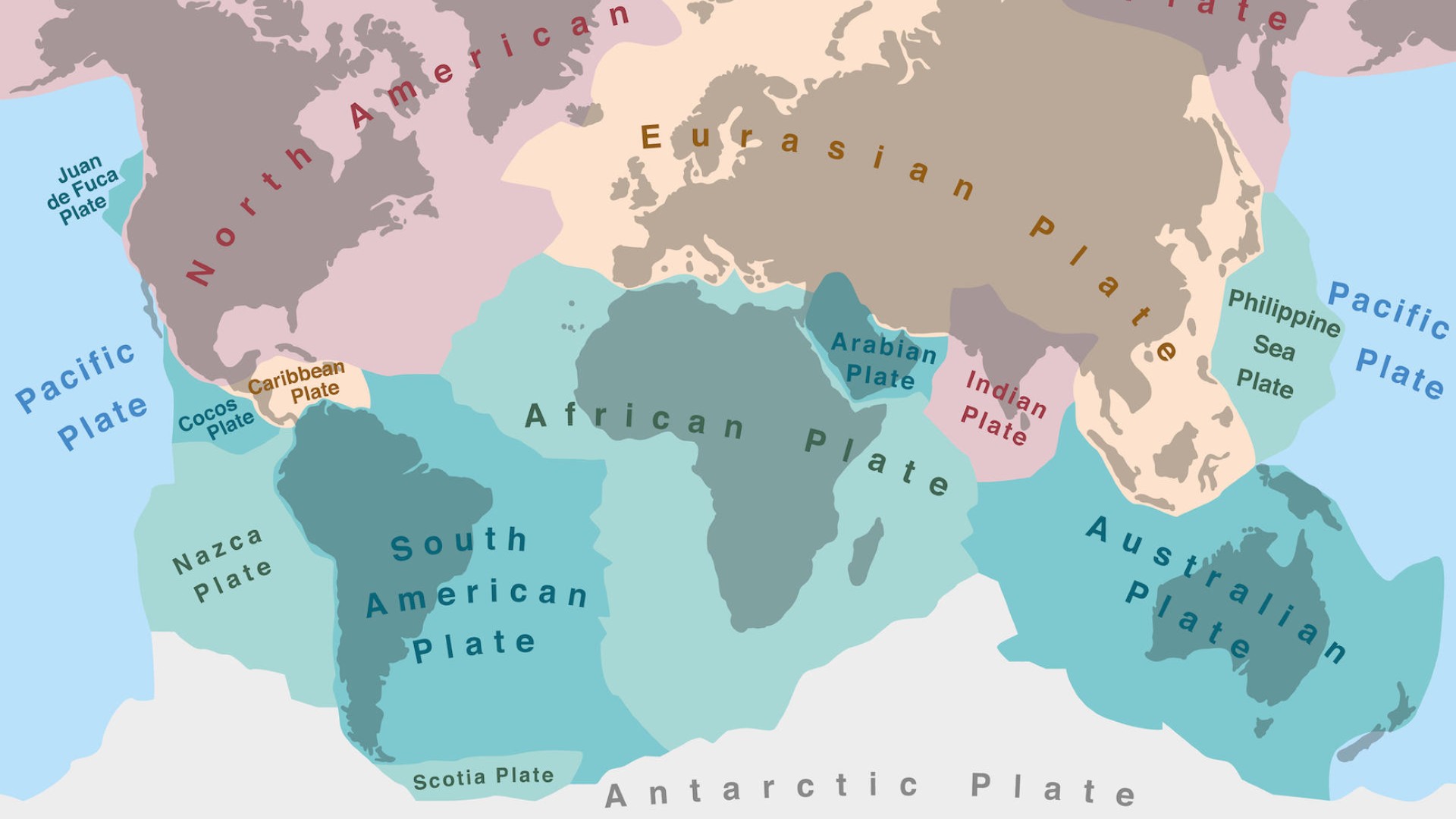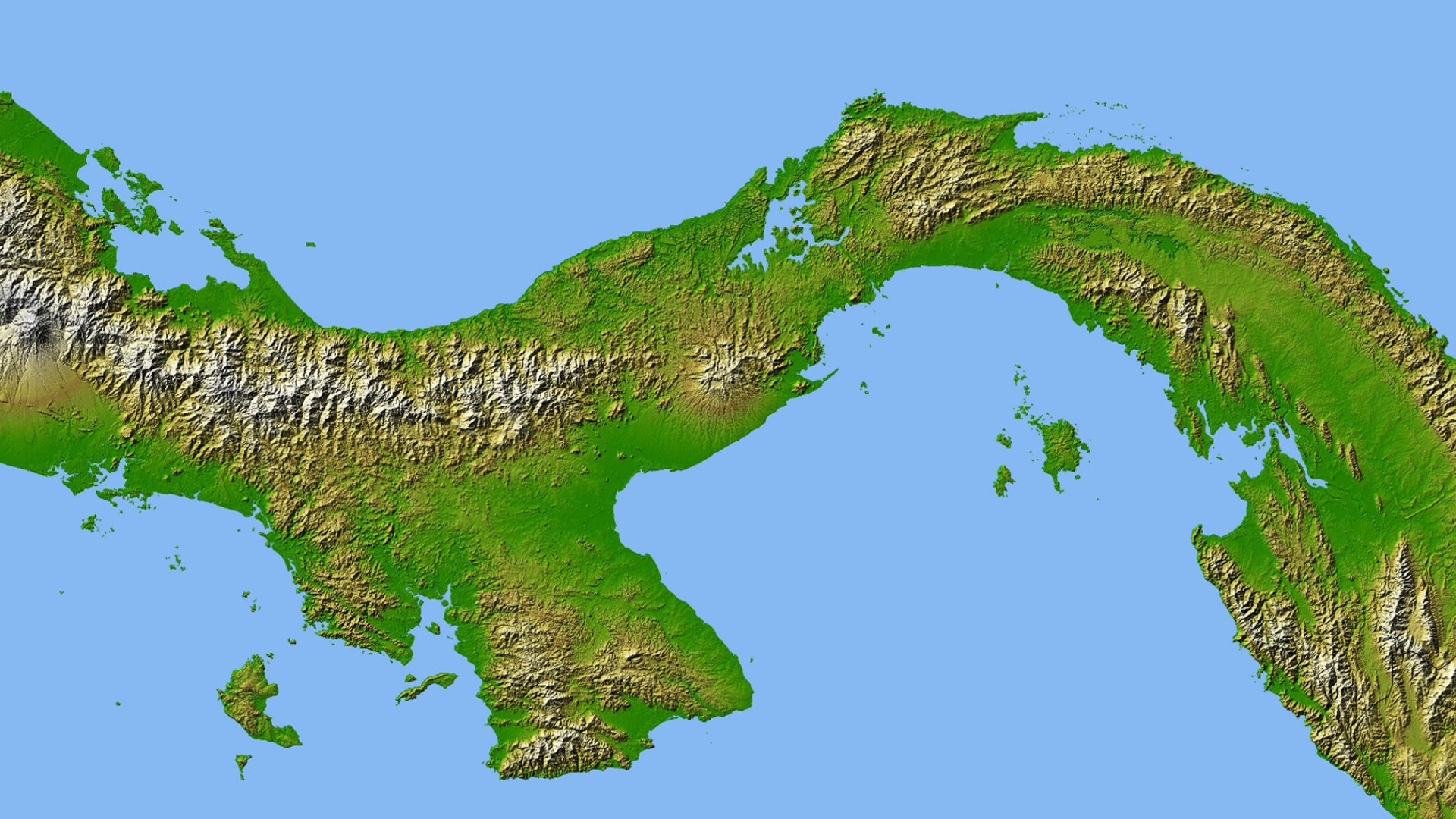
Aside from supercontinent formations, North and South America were unconnected up until several million years ago; then a tiny slat of land linked the continents, triggering impacts that affected the entire planet. This small stretch of land, known as the Isthmus of Panama, transformed global climate and launched a huge natural experiment in migration for plants and animals.
But exactly how many million years ago did the Americas link up? The "standard model" dates it to about 3 million years ago, while some more recent studies say 6 million to 15 million years, with "an initial land bridge" as early as 23 million years ago, according to a 2016 report in the journal Science Advances.
"It's still controversial," Camilo Montes, a structural geologist at the University of the Andes in Bogotá, Colombia, told Live Science.
Related: How do we know how old Earth is?
Isthmus of Panama emerges on the map
The Panamanian land bridge arose because of tectonic forces. Large chunks of crust called tectonic plates cover Earth's outer layer, colliding with each other to build mountain ranges and pulling apart to create ocean basins. The isthmus formed when the Caribbean tectonic plate wedged between plates carrying the Americas, Montes said. Resulting tectonic activity raised the seafloor while creating volcanoes that breached the ocean surface as islands, according to NASA Earth Observatory. Over millions of years, sediment from ocean currents filled in the spaces between islands, until the land bridge as we know it was formed. This seemingly small land bridge cut off the North Atlantic Ocean from the North Pacific Ocean, changing ocean currents.
The ensuing isthmus proved transformative, forcing warm, equatorial current from the Gulf of Mexico into the Atlantic and up the North American coast as the Gulf Stream. Other current-related changes made the Atlantic saltier, powering global thermohaline (Greek for "heat" plus "salt") circulation, according to the Science Advances study.
"The reason we have the climate we have today is because the isthmus went up," Carlos Jaramillo, a staff scientist at the Smithsonian Tropical Research Institute, told Live Science. Only 30 to 120 miles (50 to 200 kilometers) wide and about 400 miles (640 km) long, "this tiny, tiny piece of land affected the climate of the entire planet."

Biological highway
The isthmus also provided a hugely consequential passage for living creatures from one continent to the other. The resulting Great American Biotic Interchange (GABI) was "a massive experiment in biological invasion," according to a 2020 study in the journal PNAS by Jaramillo and colleagues.
Present-day North American creatures like the Virginia opossum (Didelphis virginiana) and porcupines arose from South American migrants, while "ancestors of bears, cats, dogs, horses, llamas and raccoons" traveled the other way, according to the Earth Observatory. Meanwhile, the isthmus isolated formerly commingled ocean populations that then evolved independently.
Standard model
The standard model originated from research in the 1970s, according to the Science Advances study. That includes a 1978 study in the journal Geology that examined fossils from deep-sea cores; it found that marine species became isolated on either side of the isthmus about 3 million years ago. Over the following decades, subsequent studies reaffirmed this timeline, according to the Science Advances report.
Traditional dating of GABI also supported that estimate, according to a 2013 study in the Bulletin of Marine Science journal. Scientists used primarily animal fossil data to establish GABI's timing, according to a 2010 study in the Ecography journal. Such fossils were best dated by their location in rock layers, according to a 2008 review in the journal Paleoceanography and Paleoclimatology.

Scientists also linked the closing of the isthmus with the timing of ancient global cooling. Researchers noticed that ice sheet formation and related cooling coincided with when the isthmus was thought to have formed (as judged by fossil evidence), the 2008 review said. So they hypothesized that this cooling was linked to changes in currents caused by the isthmus. For example, some researchers said the Gulf Stream, by carrying more moisture to the Arctic, led to additional sea ice, which would reflect more sunlight and cause cooling, according to Woods Hole Oceanographic Institution.
Challenges to the Isthmus' date
A 2015 publication by Montes and his colleagues in the journal Science challenged that traditional view. Crystals called zircons traveled in rivers from modern-day Panama to Colombia 15 million to 13 million years ago, revealing a land connection, the study found. Subsequently, a 2015 study of fossil and DNA evidence in the journal PNAS found "significant waves" of land organisms traversing the continents at 20 million and 6 million years ago.
Shortly afterward, however, the 2016 Science Advances study pushed back against those challenges via an "exhaustive review and reanalysis." It found mixing of surface water and marine animal genes from either side of the isthmus until about 3 million years ago. Additionally, it timed massive GABI migrations of land mammals as beginning around that point.
More recent research has continued to challenge the standard model, though. A review by Jaramillo in the book "Mountains, Climate and Biodiversity" (Wiley-Blackwell, 2018) further argues for a more spread-out GABI timeline and challenges links between isthmus closure at roughly 3 million years ago and thermohaline circulation. Some recent geological findings add support for an older linkage, Jaramillo said.
An earlier closure could have major consequences for various fields. It would suggest that scientists need a new explanation for global cooling 3 million years ago. It has also spurred some biologists to reexamine "molecular clocks" used to estimate evolutionary timelines and often calibrated to the isthmus' birth. "They realized that their … phylogenies [branching diagrams of evolutionary relationships] could be much different and much older," Montes said.







